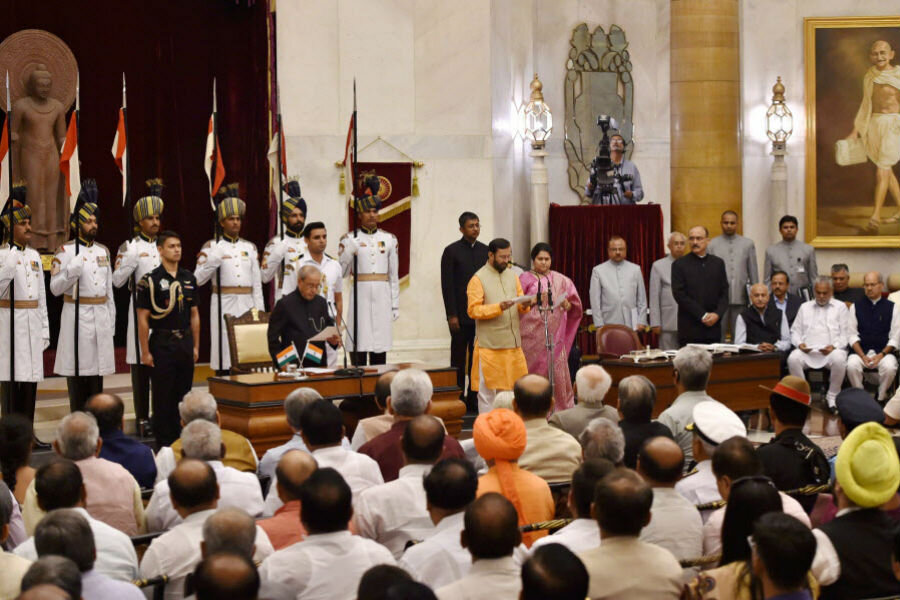Why has Indian PM Narendra Modi made his cabinet so big?
Loading...
Indian Prime Minister Narendra Modi expanded his cabinet to the largest size in years on Tuesday, with the induction of 19 new ministers, including several from lower castes.
The move could help boost Mr. Modi's standing among lower-caste voters but drew swift criticism from existing supporters who see the expansion as a flying in the face of his campaign promise of “minimum government and minimum governance” in 2014.
The new ministers were sworn in after Mr. Modi dropped five cabinet members. The cabinet now stands with 78 members, one of the biggest in years. Modi also expanded his cabinet two years ago, in an attempt to increase regional representation and expedite policymaking.
The new cabinet is larger than the highly-criticized, 71-member cabinet of the previous government, which analysts say resulted in turf wars that hampered decisionmaking.
Indian cabinet size has been increasing over the past 25 years for reasons such as "coalition compulsions" and the need for regional representation, wrote Seema Chishti for The India Express.
“What you can read from this is that it is not particularly efficient or concerned about governance,” Manoj Joshi, a political expert at Observer Research Foundation in New Delhi told Reuters, speaking of Modi's Bharatiya Janata Party.
Although critics have said the ruling party suffers from a shortage of experienced members, the new cabinet may help with elections. Some of the new ministers are from India’s so-called backward castes, whose presence on the cabinet are expected to help sway votes during an election in India’s most populous state, Uttar Pradesh, next year. The impacts may reach as far as 2019 when Modi will run for reelection.
This decision may break a general promise Modi made two years ago, but it also shows his loyalty to a group that supported him in the election. “His eyes are set on his re-election in 2019,” Neerja Chowdhury, an independent political analyst told Reuters. “He has given representation to the social groups that voted for him in the last general election.”
India's cabinet has long been known for displaying certain kinds of diversity. The first cabinet after independence included Rajkumari Amrit Kaur, the first woman Cabinet minister, as well as outsiders and critics of Congress, Seema Chishti reported, but diversity of other kinds has largely been missing.
“The Cabinet must reflect India’s national character — its regions, classes, castes, communities and ethnicities. For any long-term idea of a stable national government, it must reflect all aspects of India. In fact, in today’s times, even the West is looking towards India to understand how we manage and deal with diversities,” Surinder Singh Jodhka of Jawaharlal Nehru University told The Indian Express.
An increase in diversity could help restore a more rigorous system of checks and balances, political scientist and author Zoya Hasan told The Indian Express. “The idea of ‘primus inter pares’ or the PM being ‘first among equals’ has gradually been replaced by a PM who sees himself as first. But India is speckled, it has a coalition polity, which Modi must take into account as he builds his team,” political scientist Balveer Arora told The Indian Express.






